What’s in the new museum to Prime Ministers: concept, technology
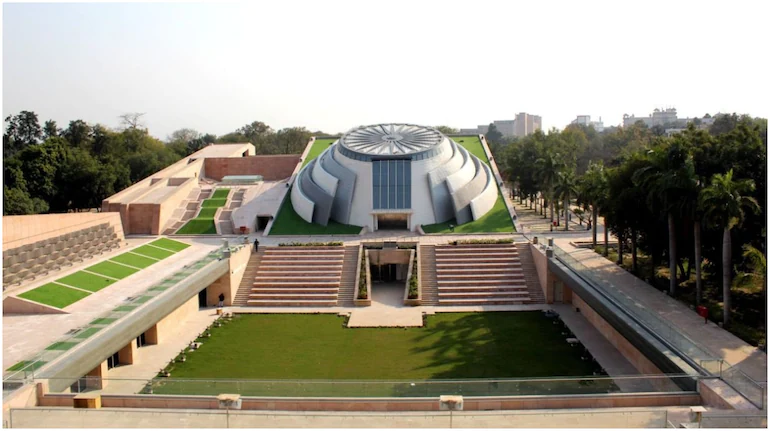
What’s in the new museum to Prime Ministers: concept, technology
On Thursday, Prime Minister Narendra Modi opened the Pradhanmantri Sangrahalaya in New Delhi’s Teen Murti Estate. The museum commemorates the 14 Prime Ministers that served, from Jawaharlal Nehru to Manmohan Singh and the many obstacles they faced while in office. (The museum is still under construction, and Modi’s own tenure is not part of the narrative yet.)
“All Prime Ministers have made so many contributions to achieving constitutional democracy’s aspirations,” Modi remarked during the inauguration.
Controversy and concept
In 2016, the idea of creating a museum dedicated to India’s Prime Ministers was floated. Since Nehru’s mansion, Teen Murti Estate, was later turned into a memorial to the first Prime Minister, Congress opposed the concept. Manmohan Singh wrote to Modi, voicing his displeasure with the “goal” to “alter the nature and character” of the Nehru Memorial Museum and Library (NMML) and the Teen Murti complex.
Teen Murti Estate, where Nehru lived for 16 years, according to NMML leaders, is the ideal location for the Pradhanmantri Sangrahalaya because of the continuity it represents.
The Rs 270-crore project was approved in 2018, and in May 2019, NMML was named the project’s nodal agency. The project missed its October 2020 completion schedule due to delays in civil works, content and curation challenges, and disruptions caused by pandemic lockdowns.
Erstwhile Nehru Museum
The old Nehru Museum has been incorporated into the new structure. The Nehru Museum has been updated technologically and is now known as Block I of the Prime Ministers’ Museum. Several gifts received by Nehru (former prime minister) from around the world that had never been displayed before were displayed on the first level of the rebuilt Block I.
Two new galleries have been added on the ground level: the Constitution Gallery and India at Independence: British Legacy.
The new building
Visitors go down to the many galleries from the top of the new museum, Block II of the complex, designed in the shape of the Ashok Chakra. Gulzarilal Nanda, Lal Bahadur Shastri, Indira Gandhi, P V Narasimha Rao, H D Deve Gowda, I K Gujral, Atal Bihari Vajpayee, and Manmohan Singh have galleries on the ground level.
Rajiv Gandhi, V P Singh, Chandra Shekhar, Morarji Desai, and Charan Singh all have galleries on the first level. According to officials, the driving concept has been to recognise the contributions of all Prime Ministers in a nonpartisan manner.
The Shastri gallery focuses on his contributions to the Green Revolution and the 1965 Indo-Pak war. The Indira gallery focuses on India’s contribution to the liberation of Bangladesh and bank nationalisation. The Vajpayee gallery honours him as a renowned parliamentarian and orator and India’s victories in the Kargil War and the nuclear testing at Pokhran. Manmohan Singh’s (former prime minister) accomplishments include the early 1990s economic reforms and the civil nuclear agreement with the United States.
Memorabilia displays
Families of all former Prime Ministers have been asked to donate some of their personal possessions for exhibition during the last two years. Morarji’s family provided his Bhagavad Gita copy, Gandhi topi, pen, and rudraksh mala, while Shastri’s family donated his charkha, badminton racquet, and several letters.
Chandra Shekhar’s handwritten journals and Vajpayee’s Bharat Ratna award, spectacles, wristwatch, and several letters are on exhibit.
No new personal items have been added to the Indira and Rajiv galleries.
Photographs, lectures, video clips, newspaper interviews, and even original texts are among the items on show. Doordarshan, the Films Division, Sansad TV, the Ministry of Defence, Indian and international media organisations and news agencies, and the Ministry of External Affairs contributed.
Families were asked to provide useful information about the leaders, and the majority of this content was obtained under a perpetual licence.
Virtual engagement
The Rs 306 crore museum, which spans 10,491 square metres and features 43 exhibits, can seat 4,000 people at a time. A ‘Time Machine’ transports visitors back in time, while the ‘Anubhuti’ engagement zone offers a walk with a hologram of any Prime Minister, a photo with them, or a letter signed by them.
Virtual reality, augmented reality, holograms, and audio-visual aspects are all used extensively in the museum. The greeting area has a levitating insignia, while ‘Glimpses of the Future’ on the ground level allows guests to virtually participate in future initiatives.
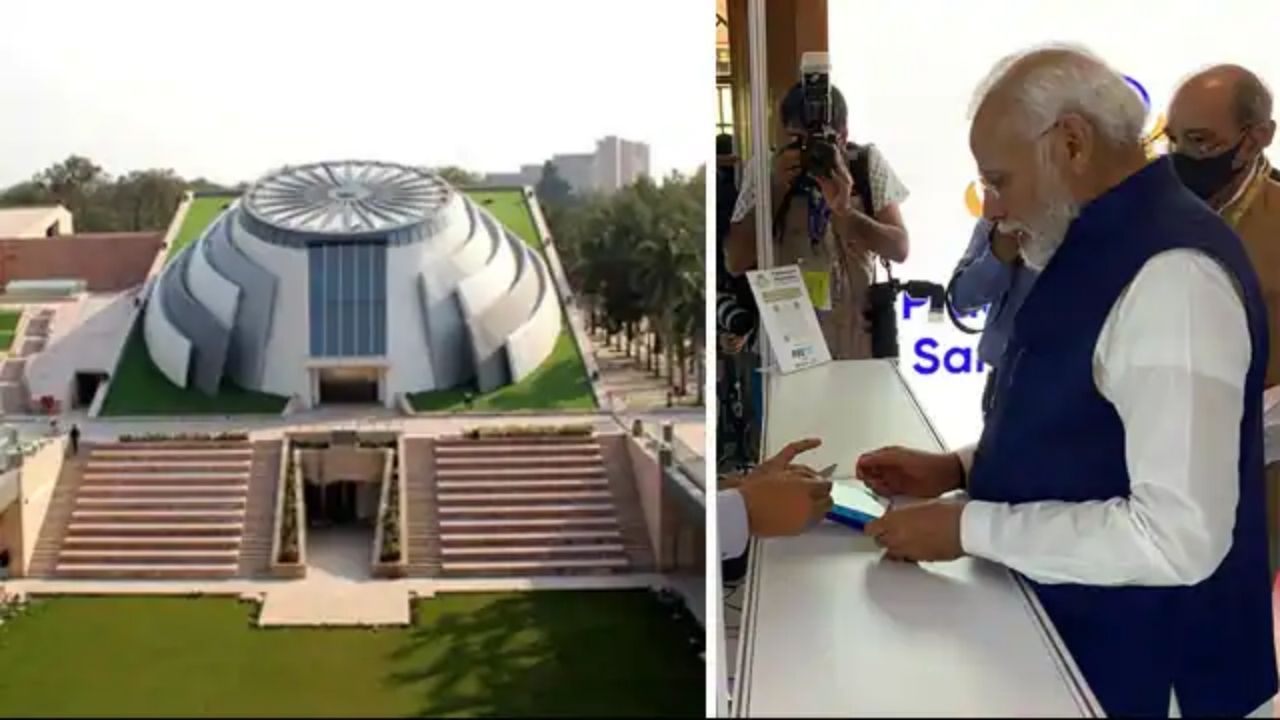
Prime Minister Modi buys the first ticket to watch past PMs in museum
After inaugurating the museum dedicated to India’s 14 former prime leaders, Prime Minister Narendra Modi bought the first ticket to enter the Pradhan Mantri Sangrahalaya.
According to organisers, the museum will feature a technologically enhanced presentation of the country’s first prime minister, Jawaharlal Nehru’s life and contributions, and a number of presents received by him from throughout the world that will be displayed for the first time.
The museum was created to raise public awareness about these leaders. According to officials, it recognises the contributions of all Prime Ministers, regardless of their ideology or term in office.
“The sangrahalaya is a seamless blend of old and contemporary. It contains the former Nehru Museum building, known as Block I, which now houses a completely refurbished, technologically enhanced exhibit on Jawaharlal Nehru’s (former prime minister) life and contributions. In the restored Block I, he has put on display a number of gifts he has received from all over the world that has never been displayed before, “a source confirmed.
The museum depicts the story of how India’s prime ministers led the country through several problems and secured its overall progress, beginning with the country’s freedom war and the creation of the Constitution. According to officials, the driving philosophy has been to recognise the contributions of all prime ministers in a nonpartisan manner.
They stated that the museum’s design is inspired by the story of a rising India that was influenced and fashioned by its rulers. Sustainable and energy-saving measures are incorporated into the design. There have been no tree removals or transplants. The building’s logo depicts the people of India clutching the “chakra,” which signifies the nation and democracy.
Information was gathered through organisations like Doordarshan, the Film Division, Sansad TV, the Ministry of Defence, media houses (both domestic and international), print media, foreign news agencies, and the Ministry of External Affairs, among others. Former prime leaders’ families were contacted for important information on them.
In most cases, the content was purchased under a perpetual licence. Personal artefacts, presents and souvenirs (felicitations, honours, medals given, commemorative stamps, coins, etc.), speeches of the prime ministers, the anecdotal portrayal of their ideology, and diverse parts of their lives have all been reflected in a themed fashion.
The Pradhanmantri Sangrahalaya has used cutting-edge technology-based interfaces to convey information simply and engagingly, particularly for children and teenagers. To make the exhibition content highly interactive, holograms, virtual reality, augmented reality, multi-touch, multi-media, interactive kiosks, computerised kinetic sculptures, smartphone applications, interactive screens, experiential installations, and other technologies were used.
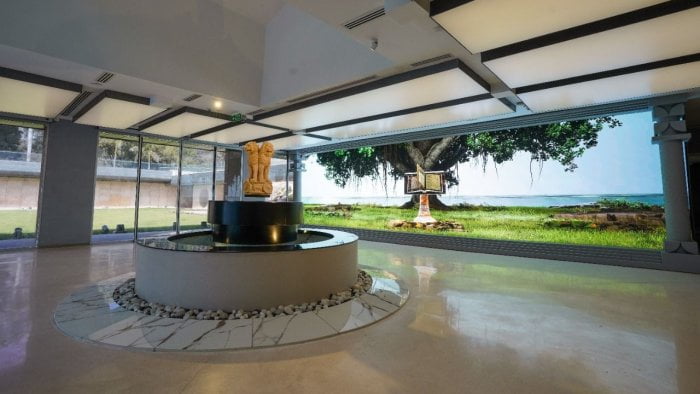
Pradhan Mantri (Prime Minister) Sangrahalaya New Delhi Address, Ticket Booking, Price 2022, Website, Cost, Timing, Museum Logo
The Prime Minister museum will highlight the leaders’ political careers and services to the country and take tourists on a tour of the country’s history, including the battle for independence.
The museum commemorates India’s 75th anniversary of independence as part of the “Azadi ka Amrit Mahotsav” events.
According to officials, the museum will educate and sensitise the future generation about all of our prime ministers’ leadership, vision, and accomplishments. They declared and tweeted that their efforts have been honoured without bias, regardless of the prime ministers’ ideologies.
It’s Ticket Price
When Prime minister Modi opened the Pune metro last month as part of the government’s Digital India project, he paid for his ticket digitally, as he has in the past.
According to news agency ANI, the museum admission costs Rs 100 online, Rs 110 offline for Indians, and Rs 750 for foreigners.
Children aged 5 to 12 will receive a 50% discount in both online and offline modes. On bookings made by the institutions, students in college and high school would receive a 25% discount.
It’s Size
The museum’s entire foundation was built on 15,600 square metres of land.
Pradhan Mantri (Prime Minister) Sangrahalaya’s Budget
The Pradhan Mantri (Prime Minister) Sangrahalaya cost Rs 271 crore to construct, and it features technology-based interfaces that immerse visitors in the country’s history. The programme aims to create an environment where each Prime Minister’s contribution to date may be used to track the country’s progress.
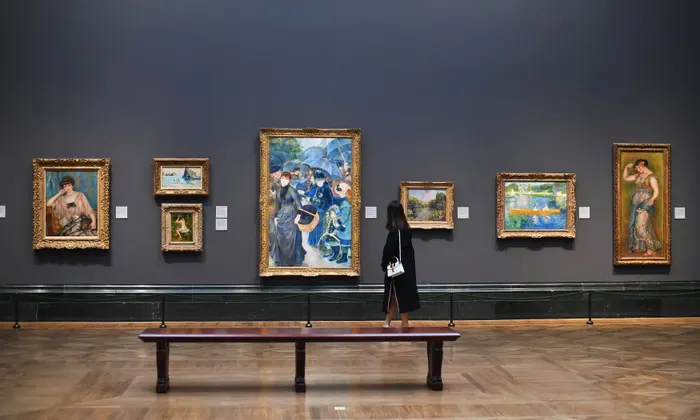
Five iconic museums to be upgraded to international standards: PM Modi
Two years ago, Prime Minister Narendra Modi promised that the country’s five most famous museums, including the Indian Museum in Kolkata, would be built to world standards.
“It has been agreed that five of the country’s most prominent museums would be built to global standards. This project will begin at the Indian Museum of Kolkata, one of the world’s oldest museums,” Prime Minister Narendra Modi stated while attending a cultural event at Kolkata’s Old Currency Building.
Prime Minister Modi stated that the national government is striving to “present India’s cultural potential in a new shape in front of the world so that India can become a major global centre of historical tourism.”
“The work to remodel Kolkata’s four historic galleries, including Belvedere House, the Old Currency Building, and the Victoria Memorial, has been finished. Our efforts are aimed at transforming Belvedere House into a world museum.”
West Bengal Governor Jagdeep Dhankhar also attended the occasion.
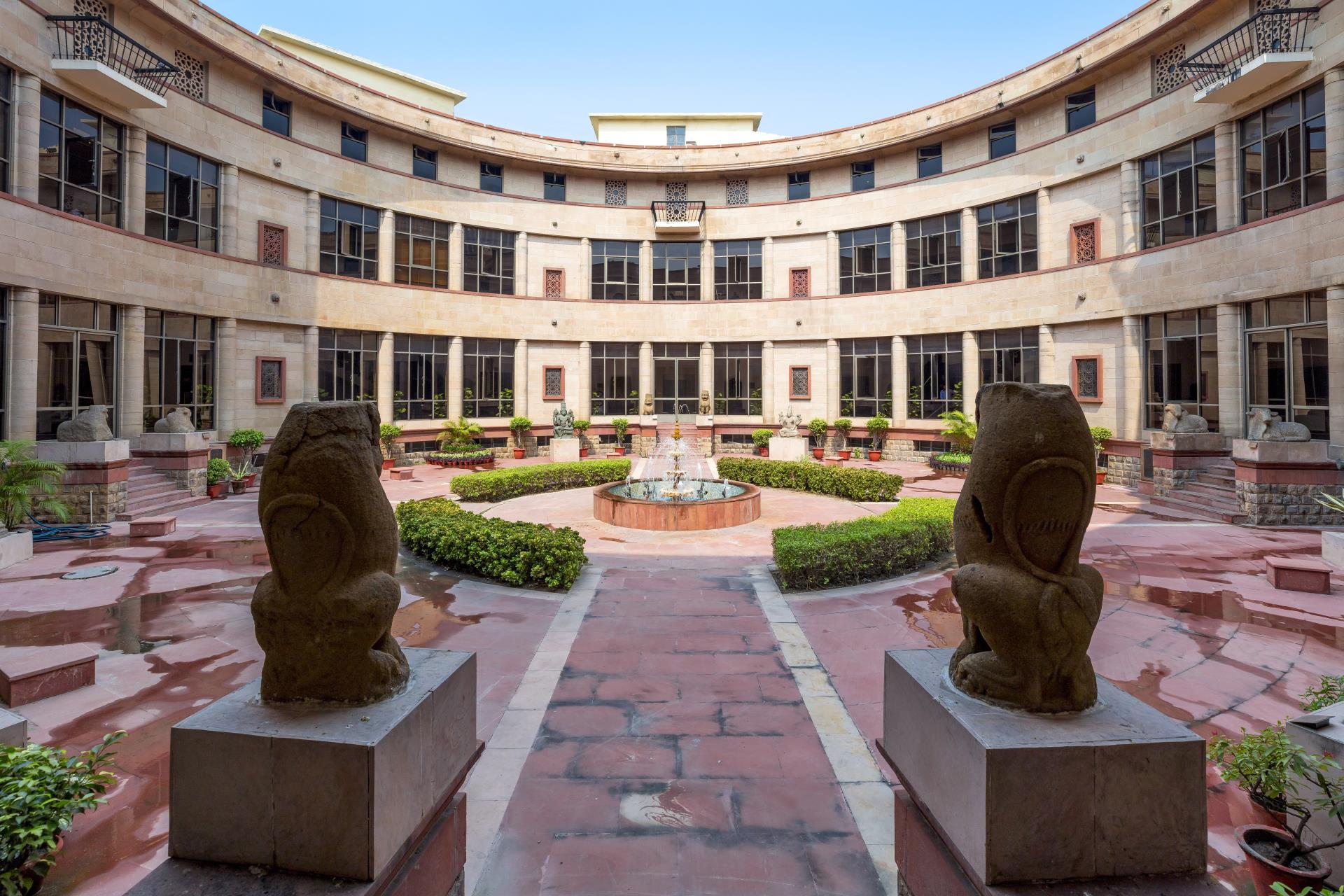
Museum and its importance to nation development
A museum is a location or structure where old artefacts are stored and shown. The name “Museum” comes from the Greek word “Mouseion,” which means “place of the Muses.”
A museum is a public, non-profit institution dedicated to the advancement of society that acquires, conserves, researches communicates, and shows the tangible and intangible legacy of humanity and its environment for the purposes of education, study, and enjoyment.
A museum is vital in a country because it gathers and protects religious, cultural, and historical artefacts. It contributes to the preservation and promotion of our cultural heritage. It is a good source of amusement and a repository of historical treasures, sculptures, and items.
A museum is a good source of information, a popular tourist attraction, and it aids in research and study.
Because museums can reflect and alter our culture, they are more relevant today than ever.
Museums and galleries provide invaluable insight into human history, the lessons we may learn from past events, wonders, and tragedies, especially during times of turbulence.
Many people believe that museums can assist us in gaining a perspective to help the public re-establish common ground and learn to create bridges rather than divide.
Museums can bring people together on a social, political, and municipal level. Local museums can foster a sense of communal cohesion while ]honouring a shared history.
It’s a great way to learn about the history of a location.
Museums and other cultural institutions will always play an important part in future generations’ education.
Museums are achieving this by including related courses/topics into the school curriculum of future generations, which will be taught in their classrooms up to the university level. Morals, culture, and values are instilled in them. Museums areas key to the future as they are the future. Our museums can bring history to life and provide light on the present and future.
Museums serve as a source of revenue for the country since visitors come in to see the sights, generating income for many groups of people.
Kenya is an excellent example of a country that earns millions of dollars through tourist visits to museums and cultural centres.
The museum facilitates cultural exchange between visiting countries. The good social impact of the museum is that it allows people from other countries to meet and discuss their diverse values. This improves international collaboration between states while broadening travellers’ mental perspectives.
Exchange of cultural ideas aids in people’s understanding, and appreciation of one another’s cultures and improves community relations. This could lead to service exchanges, inter-tribal marriages, festival visits (for example, the Osun Osogbo festival and the Olojo festival in Ile-Ife), and peace and harmony within communities.
The private sector can invest in rural communities, particularly places with tourist attractions, by building hotels, amusement parks, cultural centres, private museums/craft stores, travel agencies, banks, and information technology services. The development of such places will be aided by providing these infrastructures in locales. As a result, the museum attracts investment and produces jobs for the public while improving the neighbourhood’s social life in which it is located.
With all of the above in mind, we can see that if the Nigerian government takes care of museums and other tourist attractions in the country, it will be a great development for the country because many tourists from other nations will want to visit.
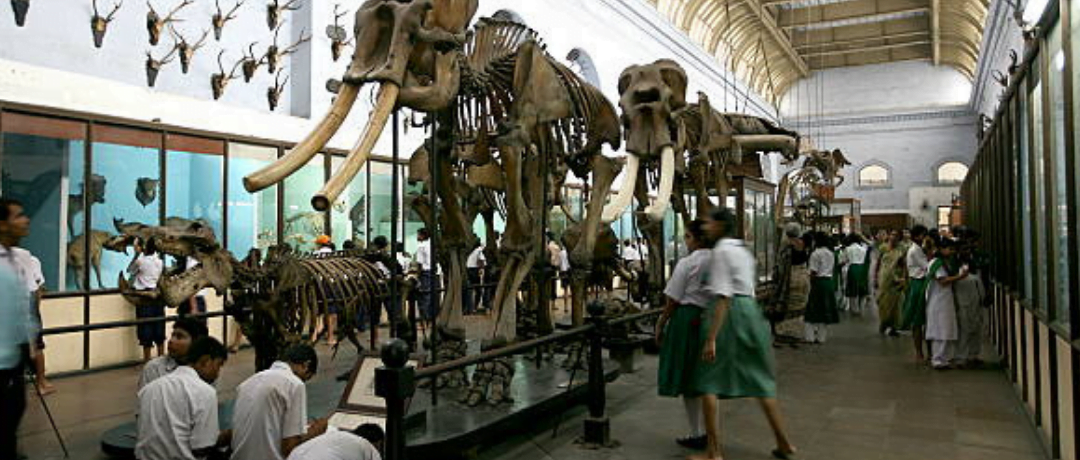
India must reinvent its museums to be more relevant and exciting.
In India, there is a vast amount of untapped museum space. The potential for documenting and displaying each region’s rich and diverse culture in a museum setting is enormous. With this in mind, Vinod Daniel, the chair of AusHeritage, Australia’s cultural heritage network, argued that Indian museums face a more severe problem than a lack of finances.
Even the phrase museum conjures up images of dusty, dull relics with no relevance to today’s world, at least in India. As a result, the derogatory term “museum piece” has come to be used to characterise someone who is either uninteresting, behind the times or plain old.
Mr Daniel proposes that museums redefine themselves as places where younger people desire to visit and participate in changing this. Engaging youth and local communities with museums and their own history is a fantastic idea that India could consider incorporating into its museum strategy. Whether it’s an art museum, a culture museum, or a natural history museum, including the people whose stories are being recounted should always be a priority.
While some museums in India have made a concerted effort to make art and culture more accessible to the public, many others are disorganised and lack genuine engagement with visitors. Despite India’s abundance of history, much of it remains dusty and ignored in some corners of a poorly designed museums.
Organising events – like music, dance, or even simple parties, as Mr Daniel suggests – to encourage young people to visit these spaces could be a great way to reinvent how we think about museums – as living, breathing spaces that can speak to us today about what we can learn from our rich history, rather than as spaces that are dead and reflect a time long past. A civilisation that aspires to be a future leader cannot afford to overlook the lessons that its past has to offer.
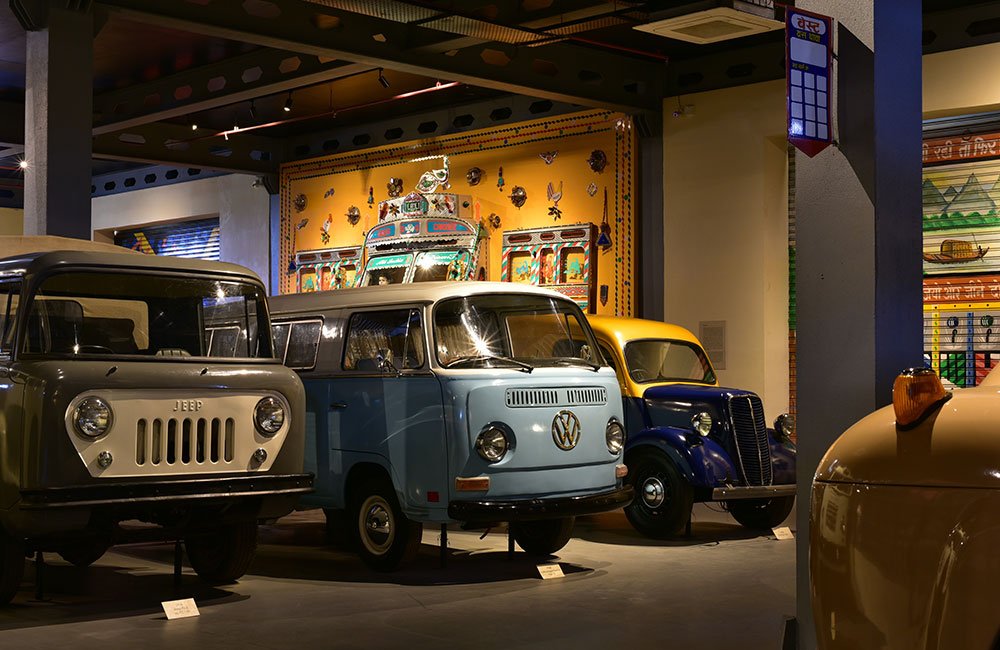
Challenges Museums in India are facing
Improving the museum sector is a critical component of nation-building. It should be the starting point because it connects the past with the future. It has the potential to become a high-revenue sector for the ministry of tourism. Museums are popular destinations for cultural tourism, but, in India, we rarely choose museums as the hallmark or sign of a memorable visit.
Why is the term “museum” the least searched on Google? Why are museum visits classified as “alternative” or “off-beat” activities?
The Lack of a Vision
“Across the country, most museums don’t have a director. Most western museums have a director for four or five years since it takes time to turn an idea into reality.”
Museums are sometimes used as ‘Punishment Postings’ for IAS officers in India. It is common to designate individuals as Museum Directors who have no prior experience with arts administration or curatorial techniques. Furthermore, no training is provided for such Directors to equip them with the necessary skills to run city/state museums. So that almost defeats the purpose of creating a museum concept.
Staffing
“Most museum employees in this country cannot contribute to the museum’s mission. The system is part of the problem. Many of them are recruited through UPSC, and having the required skill set is not one of the selection criteria. A proper selection procedure must be implemented.”
If you’ve ever visited a museum, you’ve probably encountered Museum Attendants who aren’t always nice and can’t explain a single thing about the exhibit without a guide.
They’re generally there to protect objects from being mishandled or broken. They hardly ever leave their seats in museums with a small number of tourists. The harsh reality is that the staffing criteria are set up so that after a certain number of years of doing this day in and day out, they may expect to earn around 50,000 INR per month!! Compared to a new hire in the Education department, the remuneration ranges from $10,000 to $12,000 per month. Museums go wrong in this area.
Audience Engagement
“One of the things that should be done is to figure out what would make museums more appealing to visitors and make them feel engaged.”
Unfortunately, even museums with a high volume of walk-in visitors appear to overlook or overlook the fine line between outreach and engagement. These are two very different things, and museums must learn how to involve visitors (not just youngsters), perhaps by forming a visitor-run and managed committee or club and handing over control! Trust is crucial, and audiences must be encouraged to feel a connection with the exhibit to see the connections to their own personal history!
Managing Collections
“In terms of collections, they’ll reach a point where they’ll have to prioritise what they gather.” Museums need to reassess how they handle this whole situation. Many museums in the West would have a collection development strategy in place. Only a particular type of collection can be housed at a specific museum; otherwise, they can be housed elsewhere.”
State and city museums, except the KNMA and Bhau Daji Lad, are unlikely to have a clear mandate for acquisitions or loan terms. Museums must take collections maintenance, digitisation, and conservation seriously, and a budget must be provided aside for it.
Intangible Cultural Heritage
“Not only India, but most developing countries, including India, care about the last item. That is the problem with intangible cultures, like dances and storytelling. Museums should include intangible qualities in their collections. It will attract a larger audience.”
This is the most important thing that museums can and must achieve. Museums are by their by nature multidisciplinary, so incorporating traditional or folk arts makes sense.
Bookaroo was recently held in the Indian Museum, and CSMVS offers regular workshops in collaboration with Paramparik Karigar. Textile demonstrations and 15-minute storytelling sessions throughout the day, and interactive arts, should be considered by museums.
And the final point: The Disconnect between Academia and Museums
While we have more than 1500 museums in India, we do not have courses in the academic world that would equip the next generation of Museum leaders with skills in arts management, collections management, curatorial practices, design or communication technology. Course content is not tailor-made to suit the different requirements Museums have.
On the other end of the spectrum, most Museums are not open to people from different disciplines. This closes all forms of cross-industry interaction for Museums and creates an elitist brood that sometimes becomes unapproachable for emerging museum professionals.
Australia-based museologist and conservator Vinod Daniel has been working on restoration projects in India and in several other countries for a while now. He discusses the urgent need for museums in India to address audience and community engagement concerns, the importance of strong leadership and staffing, and how the repatriation of artefacts held abroad matters. He discusses why museums are important for effective nation-building and what India can learn from museums around the world.




